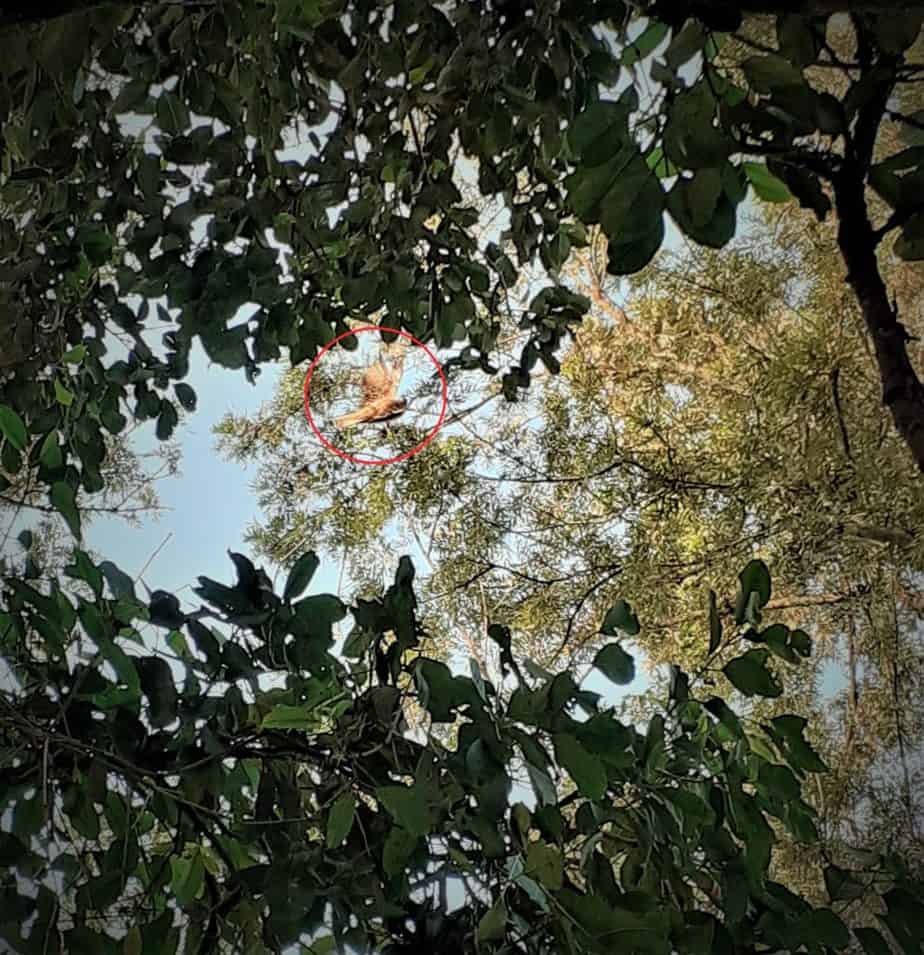There was someone tapping on our gate. Two gentlemen were seeking permission to enter; to rescue a bird trapped on our silver oak tree.
People in neighbouring buildings had seen the bird, a kite, struggling since that morning. Its wing had been caught in manja (twine used to fly kites) that must have got entangled in the tree during the kite-flying season.
A young man working in an office nearby had been monitoring the bird. He saw that though other kites had been attempting to free it, the raptor remained trapped several hours later, into the late afternoon. And he had the presence of mind to get help.
The bird was dangling high up on the tree, and it took some effort to even spot it from the ground. It was a Black Kite, a rather common bird of prey-turned scavenger, that is concentrated around human populations.

C H Veera Babu and Naveen from the Avian and Reptile Rehabilitation Centre (ARRC), Bengaluru, work as a team. They were doing a rescue at Lal Bagh when they got a call assigning them this case, and they came quickly, before it got too dark.

I wondered how they would be able to reach the bird that was about 80 feet above the ground, on a tree with branches few and far between.
“We have all the equipment to climb and rescue the bird”, said Naveen confidently. It was evident this was a run-of-the-mill task for Veera Babu as well.
Naveen said they do 8-12 rescues every day, and at this time of the year, kites (and other birds) frequently get caught in manja. Quite often, chicks fall out of precariously-built nests, so they need to be rescued and reunited with their mothers. The bird they had rescued at Lal Bagh was also a kite, and it needed medical attention. It was still in their vehicle, to be taken to ARRC.
After assessing the situation, Naveen and Veera Babu decided to go to the terrace above the first floor and climb the tree from there. Ladder extended, harnesses in place, and wearing a helmet, Veera Babu started his climb, careful to test the branches before resting his weight on them. He dislodged several dry branches en route.

Naveen explained that they try to go as close to the bird as possible. They had a pole, extendable up to 30 feet, that could be used to cut the manja. But just cutting the manja would not do, because the bird would fall down if it was too tired or injured to fly. Birds that are hurt need to be treated before they are released.
So Veera Babu climbed higher up. Naveen said that even if Veera lost his footing, he was well-protected by the harness.

As Veera progressed, the kite would suddenly flutter its wings but it was firmly tied to the branch. Its friends were still flying in circles, helpless and desperate. Once Veera was close to the bird, he cut the manja, and it flew away within a second.

According to Naveen, kites are hardy birds that can survive without food or water for about three days. This was evidently a strong and active bird, and though a few of its feathers were displaced, it could fly right away.
The operation took over an hour and half. It was carried out with precision and efficiency. One can only imagine the satisfaction of the team after saving one more life.
If you see a bird or reptile in distress, don’t hesitate to contact the ARRC helpline 94496 42222.